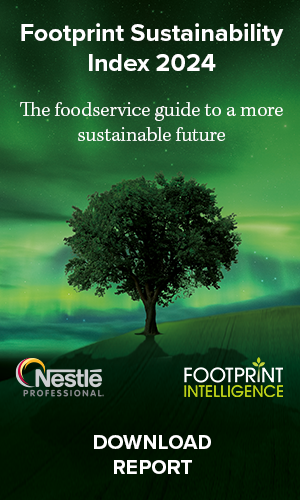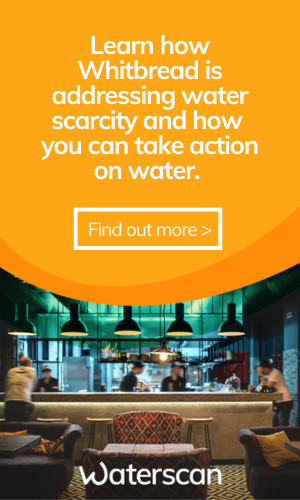The narrative spun by big food and drink brands of progress on plastic packaging is deeply flawed according to data just released. David Burrows reports.
The Ellen MacArthur Foundation (EMF) and the United Nations Environment Programme have claimed that the use of virgin plastic has peaked, at least among signatories to the new plastics economy global commitment. Use of virgin plastic fell for the second year running (by 1.2% in 2020 and 0.6% in 2019). By 2025 consumption of virgin plastic is set to fall by 19% (against 2018 levels). That would mean avoiding eight million tonnes of plastic and “keeping 40 million barrels of oil in the ground” every year, EMF noted in an update on the commitment published last week.
This sounds great. However, there is a ‘but’. Or rather ‘buts’.
First, the difference between the 1.8% reduction in virgin plastic seen in the past two years and the 17% further reduction predicted within the next four is considerable. Progress to tackle plastic can hardly be described as electric if you consider some of the other statistics in the new report (which we will below). The foundation’s forecasts to 2025 may well turn out to be the stuff of fairytales.
Second, eight million tonnes only represents around 5% of plastic packaging. Since launching in 2018, EMF has convinced a number of very big plastic producers and users to join its commitment, including Nestlé, PepsiCo, Unilever, Coca-Cola and Mars. All of the drinks brands, which include Diageo and Molson Coors, and 86% of the food brands are now publishing their plastic footprints; which is impressive given the tonnages involved in some cases. More data is also emerging on the breakdown of plastic in their portfolios.
Still, AB InBev, JBS and Tyson are among the big FMCG companies not yet involved. Foodservice and hospitality is particularly poorly represented – only Starbucks has signed up.
Third, companies are using less virgin plastic but this is largely the result of switching to different materials, which can have unintended consequences like contaminating recycling streams or bumping up carbon emissions. Indeed, it’s not yet clear what the actions taken by all these brands in the past three years means in terms of greenhouse gas emissions (we should soon find out when they start measuring everything as part of their net-zero commitments).
Some 76% of the plastic ‘elimination’ was down to material changes, with paper the favourite alternative (20%). Only 20% came from removing single-use packaging and a meagre 3% from reuse-refill and reuse-return models. More than half (56%) of all signatories reported using no reusable plastic packaging. “Efforts involving more fundamental changes to packaging, products, or business models that design out the need for single use packaging in the first place remain limited,” EMF noted.
In food companies specifically, less than 1% of all the plastic packaging was reusable; only one, Danone, increased its use of reusable packaging. Beverage brands managed 8.4%, but this was slightly down from the 2019/20 figure of 8.6% with seven of the eight firms involved either decreasing or making no progress on increasing their share of reusable plastic packaging.
These disappointing performances saw reusable packaging falling from 1.8% in 2019 to 1.6% in 2020 across all signatories. That should concern EMF. Covid may well have played a part in the dip but the narrative brands are successfully portraying in the press – one of the pandemic not stopping their progress on packaging – appears deeply flawed. Pilots on reusable packaging are popping up but rolling these out at scale seems some way off.
Fourth, that eight million tonnes avoided in 2025 relies on huge progress in the next four years to ensure 100% of plastic packaging is recyclable, compostable or reusable and also to incorporate more recycled content – tens of thousands of tonnes of it.
Regarding recyclability, this figure is the damning one for food brands: 26% of the packaging used is recyclable, compostable or reusable (RCR), which is actually 1.4 percentage points less than in 2019. They blamed a shift in product mix and covid. The figure for drinks brands was a far more encouraging 75%, albeit slightly down on the previous year.
Across all signatories the 2020 RCR figure was 64%. Though there’s a chance it’s actually 62% because some brands don’t follow EMF’s methodology – that packaging must be recyclable or compostable “in practice and at scale” which means a 30% rate across multiple regions representing 400 million inhabitants.
Greater use of recyclable plastic should in turn boost supply of recycled content (in the UK, the introduction of a plastics tax in April should also help, so too extended producer responsibility and deposit return schemes – eventually). Output from recyclers involved in the commitment increased 12% to 1.5 million tonnes in 2020, which is half the tonnage of plastic used by one company, Coca-Cola, every year.
Indeed, the targets businesses have set for recycled content are frighteningly high based on current performance. Overall recycled content continues to rise, reaching 8.2% in 2020 from a 2018 benchmark of 5.2% (the 2025 target is 26%). Non-food brands are driving this.
Of the 10 largest food and drink brands involved only Coca-Cola (11.5%) and Unilever (11%) managed double figures. Mars remains stuck on zero but is aiming for 30% by 2025. The targets set by Mondelez (5%) and Kellogg (10%) are far lower than others but perhaps more realistic – which is a worry.
Food brands in particular are struggling with recycled content, which averaged 2.6% across all the companies involved. They are hamstrung by flexible packaging: 21% of the plastic across all portfolios is multi-material, with another 17% flexible polyethylene or polypropylene – all hard to recycle, let alone recycle into food grade material.
Drinks companies rely on PET (for bottles), which is readily recycled and for which there is a greater supply of recycled content. Still, the sector struggled to hit double figures (9.4%). There were pockets of good news: Pernod Ricard managed to push its figure up by six percentage points to 13%, while Innocent drinks hit 31%.
If drinks brands are as serious about net-zero as they say, expect that 9.4% to quickly rise in the coming two to three years – because recycled plastic has a carbon footprint that can be up to four times lower than that for virgin plastic, according to the UK government.
The pace has to pick up but there was a warning from EMF that focusing on collection, recycling and disposal alone will result in continued pollution and not enough reduction in greenhouse gas emissions. “[…] businesses will need to move beyond focus on recycled content and recyclability, and invest significantly more in elimination and reuse solutions to curb growth in the total amount of packaging that needs to be circulated.”
EMF called for “substantially more effort”. It has done so in previous years but is anyone really listening?














